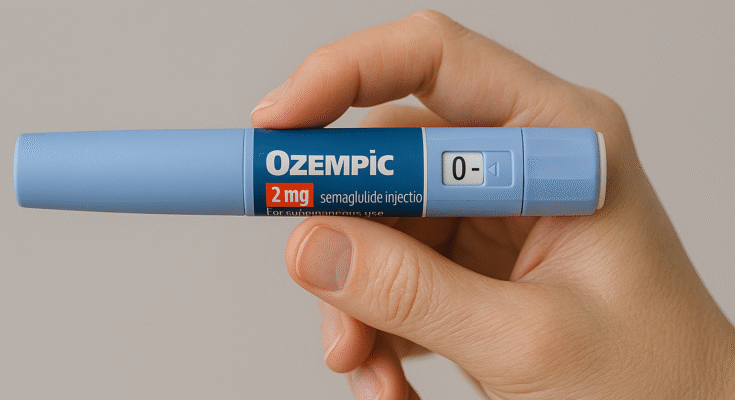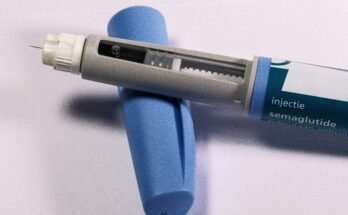Picture this: you’re holding an Ozempic 2mg pen, a sleek little device that’s about to deliver a dose of semaglutide, the medication that’s been a game-changer for managing type 2 diabetes or supporting weight loss. You twist the dose selector, and it clicks with satisfying precision. But here’s the million-dollar question: how many clicks does it take to get your prescribed dose, especially if it’s not the full 2mg? Whether you’re navigating a shortage, titrating your dose, or just curious about the mechanics, understanding the “clicks” in an Ozempic 2mg pen is like unlocking a secret code to your treatment. As an expert, I’m here to guide you through this process with clarity, enthusiasm, and a touch of insider know-how. Let’s dive into the world of clicks, doses, and how to use this pen like a pro, all while keeping things engaging and straightforward.
First, let’s get to know the Ozempic 2mg pen. This yellow-labeled marvel contains 8mg of semaglutide in 3mL of solution, designed to deliver four weekly 2mg doses, making it a one-month supply for those on the maximum dose. Semaglutide, a GLP-1 receptor agonist, mimics a hormone that regulates blood sugar and appetite, making it a powerhouse for diabetes management and, for some, weight control. The pen’s dose selector clicks as you turn it, allowing you to dial up specific doses, typically 0.25mg, 0.5mg, 1mg, or 2mg, depending on your prescription and the pen’s configuration. But what happens when you need a dose that’s not neatly marked on the dial, or you’re using a 2mg pen for a 1mg dose? That’s where the art of counting clicks comes in, a method that’s both a practical hack and a topic of heated debate.
So, what’s the deal with counting clicks? Each click on the Ozempic 2mg pen delivers a tiny increment of medication, roughly 0.027mg of semaglutide, according to user communities and some healthcare providers who’ve reverse-engineered the pen’s mechanics. To hit a 1mg dose, you’d need about 37 clicks from zero. For a 0.5mg dose, it’s around 18 to 19 clicks, and for a starting dose of 0.25mg, you’re looking at 9 to 10 clicks. For the full 2mg dose, you’d dial up to about 74 clicks, which aligns with the pen’s maximum setting. These numbers aren’t just random guesses; they’re based on shared experiences in patient forums and guidance from some pharmacists, especially during Ozempic shortages when access to lower-dose pens was limited. However, here’s the kicker: Novo Nordisk, the maker of Ozempic, doesn’t officially support dosing by clicks. They warn that it’s not a precise method and could lead to dosing errors, so consulting your healthcare provider is non-negotiable before trying this approach.
Why do people count clicks in the first place? It’s all about flexibility. During shortages, patients prescribed 0.5mg or 1mg might only find 2mg pens available. By counting clicks, they can stretch a single pen to deliver eight 1mg doses instead of four 2mg doses, potentially doubling the pen’s lifespan (though it must be discarded after 56 days for safety). Click-counting also allows for microdosing, where patients gradually increase their dose to minimize side effects like nausea or vomiting, which can hit hard when jumping from 0.5mg to 1mg. For example, someone might dial 20 clicks for a dose slightly above 0.5mg but below 1mg, easing their body into the transition. It’s a clever workaround, but it’s not without risks. Novo Nordisk and organizations like the Australian Diabetes Educators Association caution that click-counting lacks rigorous testing for accuracy. Miscounting or using the wrong pen could lead to underdosing, which might not control blood sugar effectively, or overdosing, which could cause side effects like low blood sugar or gastrointestinal distress. Plus, the medication degrades after 56 days, so stretching a pen beyond this window risks reduced potency.
Now, let’s talk about using the Ozempic 2mg pen correctly, whether you’re sticking to marked doses or venturing into click-counting territory. Start by checking the pen to ensure it’s the yellow 2mg version and the medication inside is clear and colorless. Store it in the fridge between 36°F and 46°F before first use, and afterward, keep it at room temperature or refrigerated, up to 86°F, for no more than 56 days. Never freeze it, as that can ruin the medication. For each injection, attach a fresh NovoFine Plus needle by pushing and twisting it onto the pen, then remove both the outer and inner caps. If it’s a new pen, prime it by dialing to the flow-check symbol and pressing the dose button until a drop appears at the needle tip—this ensures the pen is working but only needs to be done once per pen. Next, dial your dose by turning the selector to your prescribed amount, like 2mg, or count clicks for a custom dose, such as 37 for 1mg. If the selector stops before reaching your dose, the pen is empty, and it’s time to grab a new one. Choose an injection site—abdomen, thigh, or upper arm—insert the needle at a 90-degree angle, press the dose button until the counter hits zero, and hold for six seconds to ensure the full dose is delivered. Afterward, remove the needle, discard it in a sharps container, and store the pen properly. Never share your pen, even with a new needle, to avoid infection risks.
To make your Ozempic journey as smooth as possible, keep a few tips in mind. Track your weekly doses on a calendar to stay consistent, as Ozempic is taken once a week, with or without food. If you miss a dose, take it within five days, or skip it if it’s closer to your next scheduled injection. Side effects like nausea, vomiting, or diarrhea are common, especially when increasing doses, so gradual titration, whether through marked doses or clicks, can help. Always discuss click-counting with your doctor or pharmacist, who can provide a click chart or confirm the right number of clicks for your pen. And don’t forget to dispose of the pen after 56 days, even if medication remains, to ensure it’s still effective.
Let’s wrap this up with a clear picture of the clicks for common doses using the 2mg pen. For the full 2mg dose, you’d dial to the maximum setting, roughly 74 clicks, delivering the pen’s intended dose. For 1mg, aim for 37 clicks, which halves the maximum dose and is a common step for many patients. For 0.5mg, 18 to 19 clicks will get you there, often used during maintenance or titration. And for 0.25mg, a starting dose to ease side effects, 9 to 10 clicks should do the trick. These estimates are based on the pen’s concentration of 8mg per 3mL, but because click-counting isn’t officially endorsed, double-check with your healthcare team to avoid errors.
Mastering the Ozempic 2mg pen is about more than just counting clicks—it’s about taking control of your health with confidence. Whether you’re using the pen as designed or navigating shortages with click-counting, the key is precision and communication with your doctor. With this knowledge, you’re ready to wield your Ozempic pen like a pro, keeping your blood sugar in check and your health goals within reach. So, grab that pen, consult your healthcare provider, and let those clicks pave the way to a healthier you.

Jake Morrison is a health journalist and certified medical researcher who specializes in obesity treatment and diabetes care. With a background in biomedical science and years spent analyzing real-world outcomes of GLP-1 therapies like Ozempic, Jake brings an evidence-driven, reader-friendly approach to complex medical topics.




